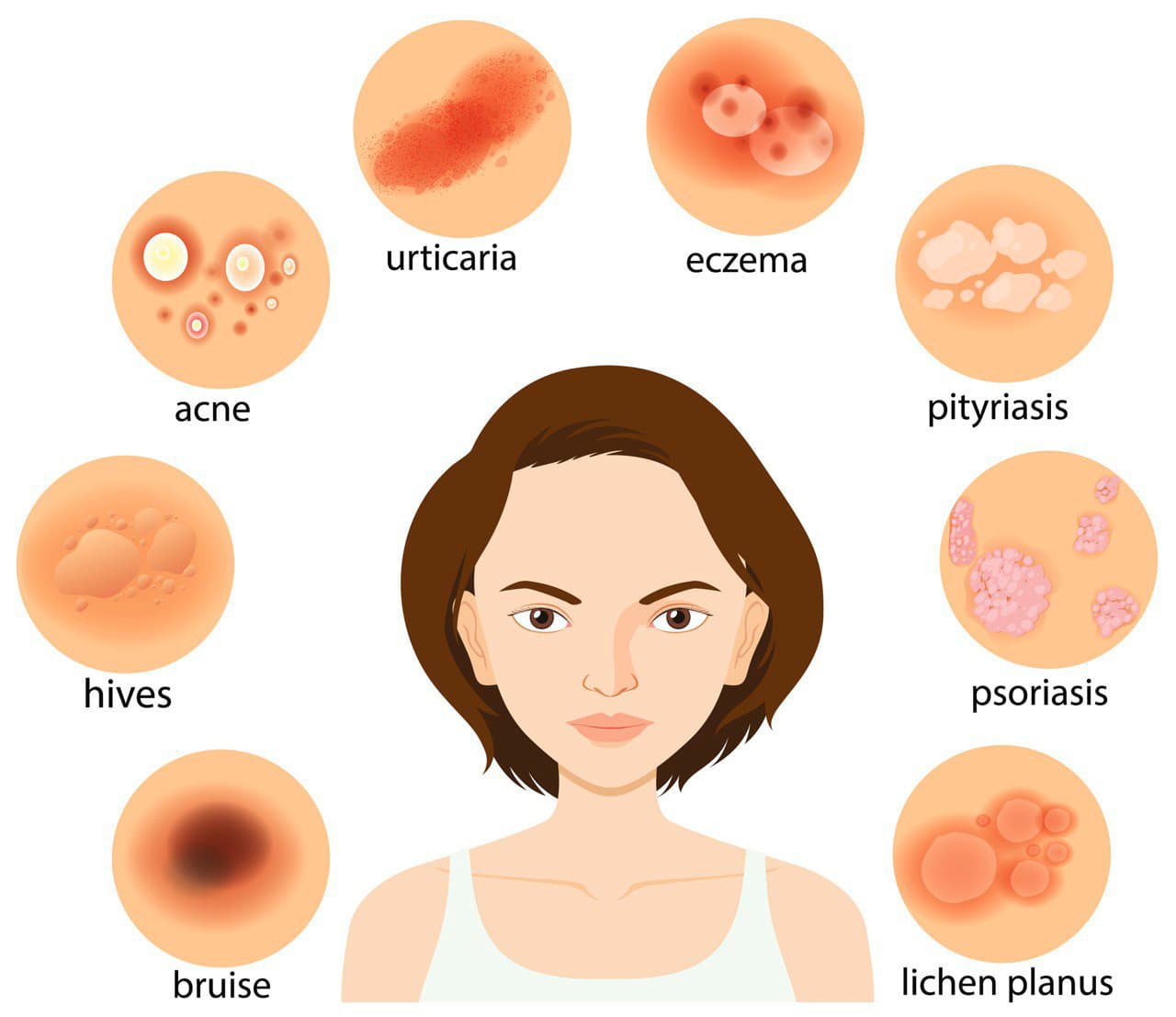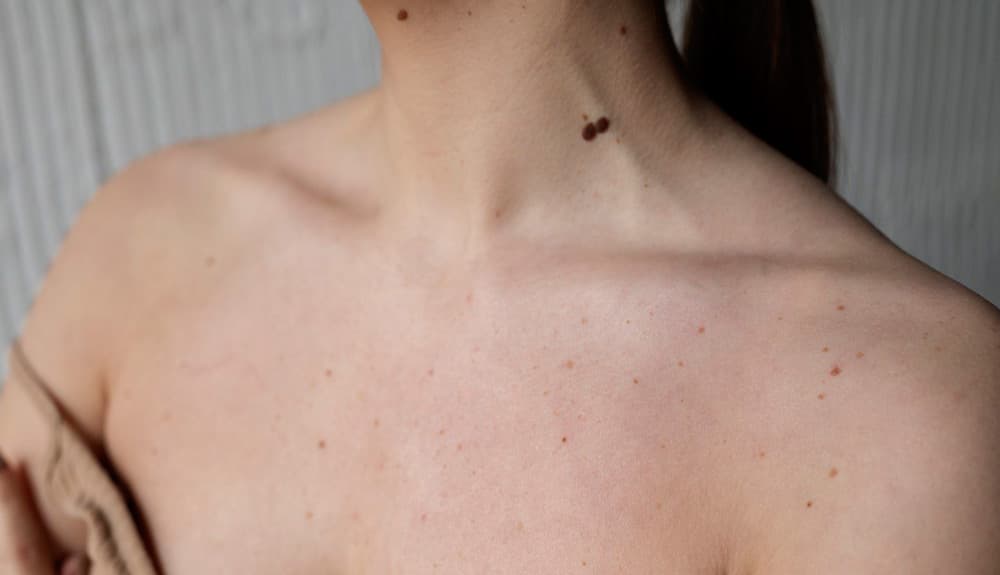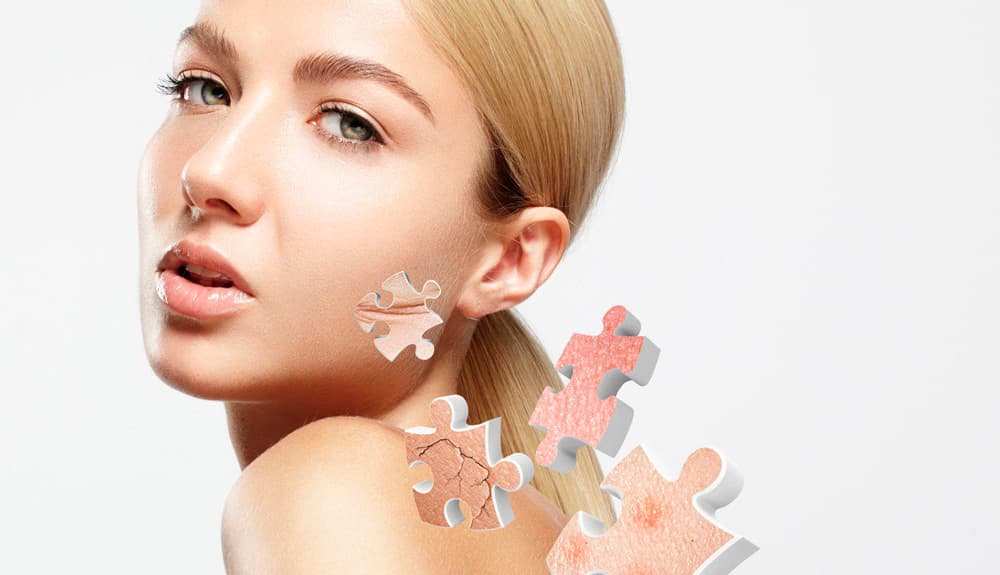SKIN SPOTS
“Just aging,” we tend to say, brushing the issue aside with an oversimplified explanation that leaves it unaddressed. But skin discoloration is far more complex than a mere sign of getting older. It is the result of multiple factors: improper sun exposure, aging, abnormal melanin production and more. Let us explore the nature, causes and key solutions for managing and preventing skin pigmentation disorders.
Our skin is one of our body’s most powerful allies. Its role is to protect us from external threats, including bacteria, viruses and diseases that challenge our health daily. While the skin defends us tirelessly, the question remains: who protects our skin? When it comes to skin discoloration (commonly referred to as skin spots), the skin must be cared for, nourished and protected from elements it cannot shield itself against.
SKIN PIGMENTATION: WHY DO SKIN SPOTS APPEAR?
Skin spots can develop for various reasons, each with different underlying causes and corresponding treatments. These blemishes are often due to alterations in pigmentation, the biological pigments in our body that determine skin tone. One of the most common causes of skin discoloration is the body’s irregular production of melanin.

When the body produces too much melanin (known as hypermelanosis), this leads to darker patches on the skin, commonly seen on the face and body. A typical example of this is melasma. On the other hand, when there is too little melanin production (hypomelanosis), skin spots appear as depigmented or colorless areas, often concentrated on the face.
SKIN SPOTS: CAUSES
In addition to melanin, two other substances influence skin color and contribute to discoloration: hemoglobin and carotenoids.
Carotenoids are yellow pigments present in the blood. When consumed in excess, often due to unbalanced diets, the body reacts by attempting to eliminate the surplus, which can result in visible skin spots. For this reason, it is essential to maintain a balanced diet and diversify meals to avoid overaccumulation.
Hemoglobin, the molecule in our blood responsible for transporting oxygen throughout the body, also impacts skin tone. Oxygen-rich blood gives the skin its typical pinkish hue. Therefore, fluctuations in hemoglobin levels may influence changes in skin coloration.
Additional causes of skin spots and melasma include genetic predisposition, aging, hormonal shifts due to menopause or pregnancy and metabolic changes. Excessive exposure to UV rays or contact with harsh or toxic substances can also contribute significantly to the development of pigmentation irregularities.
WHERE DO SKIN SPOTS APPEAR?
While skin discoloration can appear anywhere on the body, the most frequently affected areas are the face, shoulders, back, arms and the backs of the hands.

TREATING SKIN DISCOLORATION
What are the solutions? What are our best options for treating and preventing skin spots? The topic is extensive and treatments vary depending on the type of pigmentation. Addressing skin discoloration requires a precise and thorough process, starting with expert analysis and tailored care plans.
Consulting a team of specialists is essential when managing pigmentation issues. Identifying the type of discoloration and understanding its characteristics are critical first steps. Effective remedies often involve regenerative treatments, including depigmenting and brightening therapies specifically designed to reduce unwanted pigmentation.
Treating melanic hyperpigmentation such as melasma, solar lentigines, age spots and freckles demands professional attention and expertise. Skin spots should never be dismissed. Melasma, for example, tends to worsen over time and should be treated before external factors exacerbate a seemingly minor issue that can become more difficult to manage later on.
KNOWING HOW TO PREVENT SKIN SPOTS
Beyond treatment, prevention plays a central role in managing skin discoloration. Daily habits and simple precautions can go a long way in preventing the appearance of skin spots.
A healthy, nutrient-rich diet packed with vitamins and antioxidants is essential to strengthening the skin’s resilience to sun damage. It is always worth repeating: sun protection is crucial year-round, not just during the summer months.
DERMAMELAN®: A PROFESSIONAL THERAPY
One of the advanced treatments available for skin spots and melasma is Dermamelan®, a professional depigmenting therapy with immediate recovery. This targeted treatment is suitable for a wide range of skin types and effectively addresses various forms of melanin-related discoloration. The treatment is administered after a careful case-by-case evaluation.

Professional support is fundamental when treating skin pigmentation disorders. In my clinic, I will guide you through each stage of the treatment process with tailored care, steering you away from ineffective or harmful DIY approaches that often do more harm than good. These unverified methods can worsen conditions like melasma and delay healing. For optimal results, it is important to consult qualified and experienced professionals who specialize in the treatment and prevention of skin discoloration.
© All rights reserved


